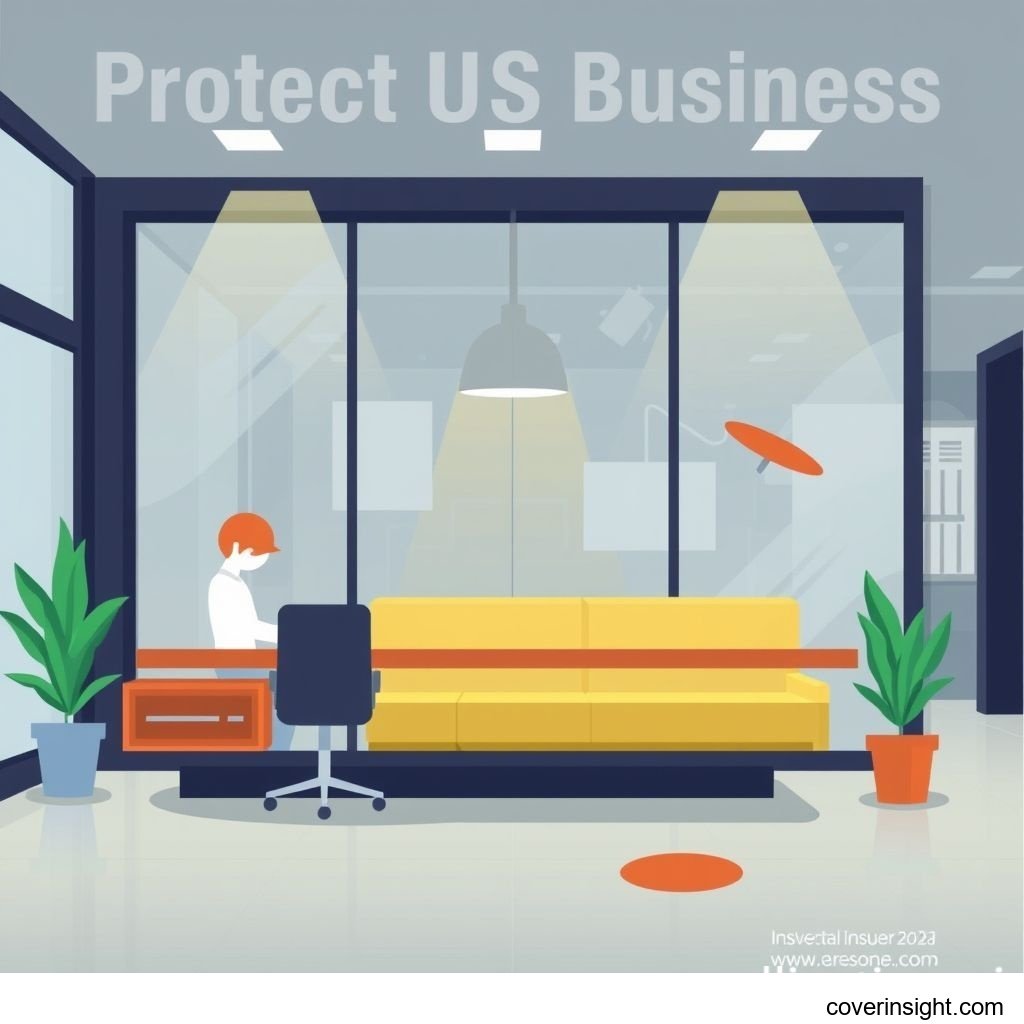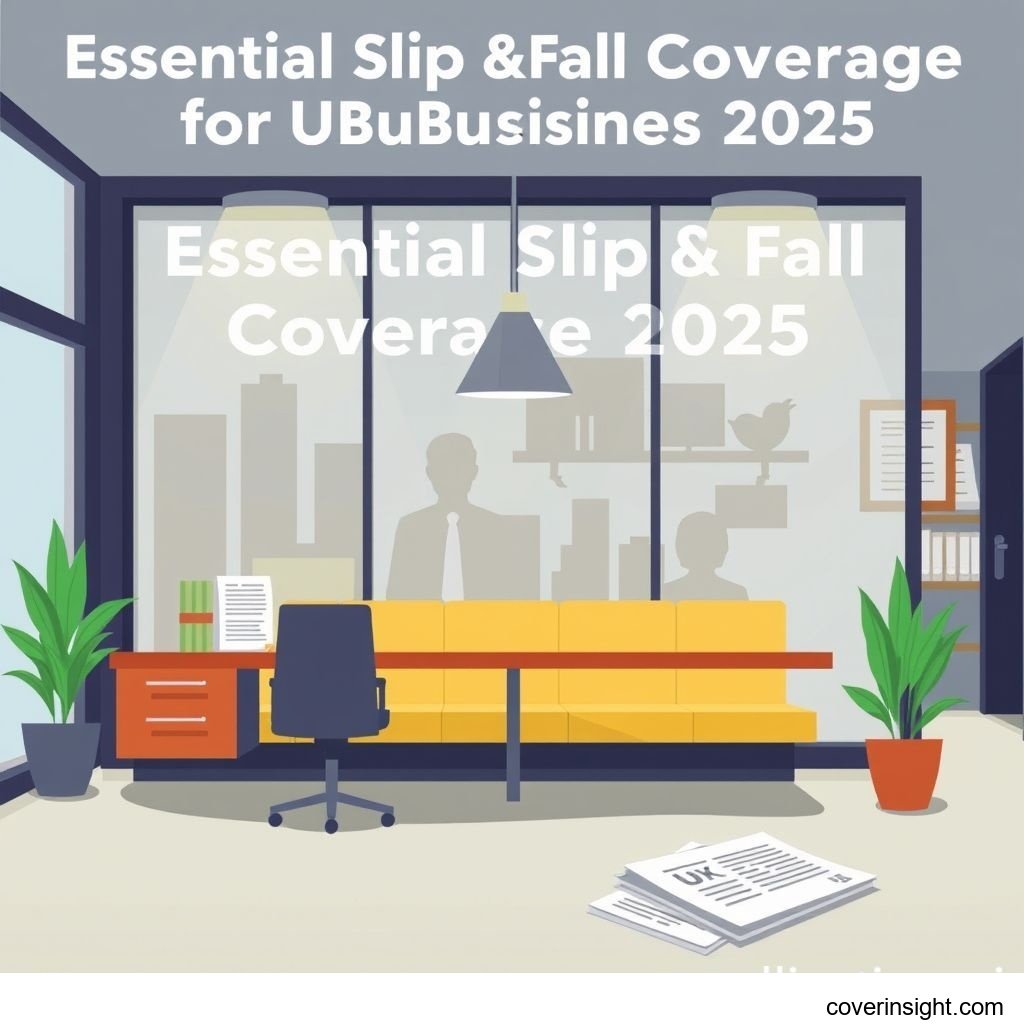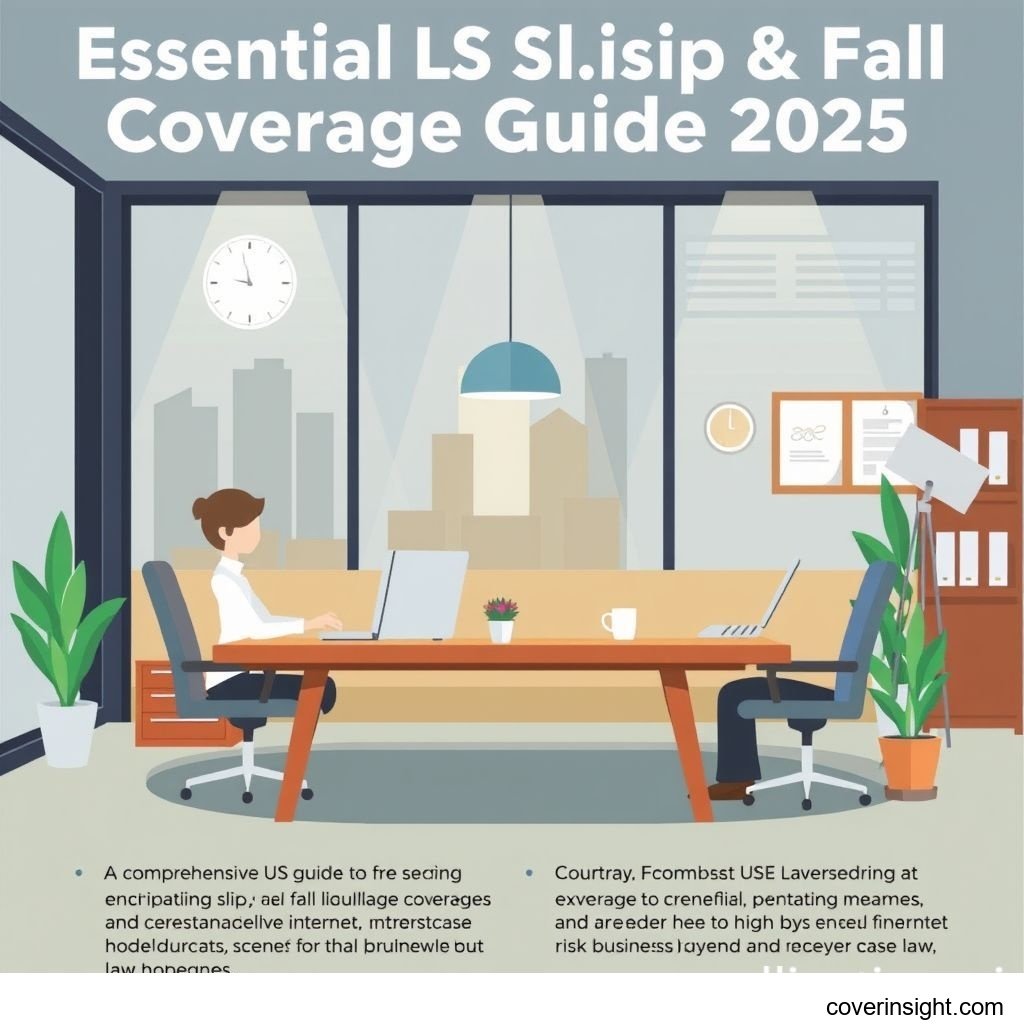Protect US Business: Essential Slip & Fall Coverage 2025
Introduction
In the dynamic landscape of 2025, safeguarding your US business against unforeseen liabilities is more critical than ever. Among the most common and potentially devastating risks is a slip and fall incident. These aren't just minor accidents; they can lead to significant bodily injuries, substantial medical expenses, and costly legal battles that threaten a business's very existence. Understanding and securing robust slip and fall coverage, typically a key component of a comprehensive general liability policy, isn't merely a good idea—it's an absolute necessity for any enterprise, big or small, that welcomes customers or visitors onto its premises. It's about protecting your financial stability and reputation in a litigious world.
Coverage Details
What’s Included
Essential slip and fall coverage is designed to protect your business financially if a third party, such as a customer, vendor, or delivery person, sustains an injury on your property due to negligence or an unsafe condition. At its core, this coverage typically includes:
-
Bodily Injury Costs: This covers medical expenses for the injured party, including ambulance services, hospital stays, doctor visits, and rehabilitation.
-
Legal Defense Fees: Should a lawsuit arise from a slip and fall, the policy will cover your legal fees, regardless of whether your business is found liable. This can be a huge relief, as litigation costs can quickly spiral out of control.
-
Settlements and Judgments: If the case results in a settlement or a court judgment against your business, the policy will pay out up to your coverage limits.
-
Pain and Suffering: In some cases, coverage may extend to compensation for the non-economic damages experienced by the injured party, such as pain, suffering, and emotional distress.
Common Exclusions
While comprehensive, slip and fall coverage does have its limits. Understanding these exclusions is vital to ensure you're not caught off guard:
-
Employee Injuries: Injuries sustained by your own employees are generally not covered under a slip and fall policy. These are typically handled by workers' compensation insurance.
-
Intentional Acts: If an injury results from an intentional act committed by you or your employees, it will not be covered.
-
Damage to Your Own Property: This coverage is for third-party injuries and property damage, not for damage to your own business property.
-
Professional Negligence: If an injury or loss stems from advice or services you provided professionally (e.g., an accountant giving bad financial advice), that falls under professional liability (E&O) insurance, not slip and fall.
-
Certain Catastrophic Events: While general liability covers many scenarios, specific perils like floods or earthquakes are usually covered under separate commercial property policies.
-
Off-Premises Incidents: Injuries occurring away from your insured business premises are generally excluded.
Cost Analysis
Price Factors
The cost of slip and fall coverage, typically part of your general liability insurance, isn't one-size-fits-all. Premiums are influenced by several key factors:
-
Industry Type: Businesses with high foot traffic or inherently more hazardous environments, like restaurants, retail stores, or construction sites, generally face higher premiums than, say, an office-based consulting firm.
-
Business Size and Revenue: Larger businesses with greater revenue and more extensive operations often have higher coverage needs and, consequently, higher premiums.
-
Location: Geographical location plays a role, with states and cities known for higher litigation rates or specific local risks potentially leading to increased costs. For instance, according to data often cited in legal journals and by the National Center for State Courts (NCSC), premises liability cases, including slip and falls, consistently make up a significant portion of civil lawsuits filed across U.S. state courts, particularly in high-population areas, demonstrating the inherent risk reflected in premiums.
-
Claims History: A business with a history of frequent or costly slip and fall claims will likely pay more than one with a clean record.
-
Safety Measures: Implementing robust safety protocols, such as clear signage for wet floors, regular maintenance, adequate lighting, and non-slip flooring, can positively impact your rates.
-
Coverage Limits and Deductibles: Higher coverage limits (the maximum amount the insurer will pay) naturally lead to higher premiums, while choosing a higher deductible (the amount you pay out-of-pocket before insurance kicks in) can lower your premium.
Saving Tips
While you can't control every factor, there are smart strategies to keep your slip and fall coverage costs in check:
-
Prioritize Safety: This is a no-brainer. Proactive measures like regular inspections, immediate spill cleanup, proper lighting, and clear hazard warnings can significantly reduce the likelihood of incidents, making your business a lower risk in the eyes of insurers.
-
Employee Training: Ensure all staff are trained on safety protocols, emergency procedures, and how to identify and mitigate potential hazards.
-
Maintain Records: Keep meticulous records of all safety checks, maintenance performed, and incident reports. This can be invaluable if a claim arises.
-
Bundle Policies: Often, insurers offer discounts if you bundle your general liability with other policies, such as property insurance or business owner's policy (BOP). You can explore various options and gain valuable perspectives by visiting Insurance Resources Global.
-
Shop Around: Don't settle for the first quote. Get multiple quotes from different providers. Online comparison tools and independent agents can help you find the best rates for your needs.
-
Review Your Policy Annually: Business needs evolve. Regularly review your coverage with your agent to ensure it still meets your requirements without overpaying for unnecessary coverage. For more insights on general business insurance needs, check out US Insurance Home.
FAQs
-
How much does slip and fall coverage cost?
The cost varies widely based on factors like your industry, business size, location, and claims history, typically ranging from a few hundred dollars to several thousand per year, as part of a general liability policy.
-
What affects premiums?
Premiums are primarily affected by your industry's risk level, the amount of foot traffic you experience, your business's revenue and size, your location, past claims, and the safety measures you have in place.
-
Is it mandatory?
While slip and fall coverage specifically isn't legally mandatory across all US states for all businesses, general liability insurance, which includes this coverage, is highly recommended and often required by landlords, clients, or specific state regulations.
-
How to choose?
Choose by assessing your business's unique risks, comparing quotes from reputable insurers, understanding policy limits and exclusions, and prioritizing a provider with excellent customer service and claims handling. Resources from the National Association of Insurance Commissioners can provide valuable guidance.
-
Consequences of no coverage?
Operating without adequate coverage can be catastrophic. A single serious slip and fall incident could lead to massive out-of-pocket medical expenses, crippling legal fees, and substantial judgments, potentially forcing your business into bankruptcy. For consumer resources on related topics, sites like Healthcare.gov offer information on health coverage, underscoring the costs involved in medical care. For state-specific regulatory information, consult your State Insurance Departments.
Author Insight & Experience: As someone living in the US and having observed countless businesses grapple with unforeseen challenges, the importance of robust slip and fall coverage truly hits home. I’ve seen firsthand how a single incident, perhaps a spilled drink in a restaurant or an unmarked step in a retail store, can quickly escalate from a minor inconvenience to a full-blown financial crisis. It's not just about the immediate payout; it's about the emotional toll, the time lost, and the potential for reputational damage. Based on my experience, business owners often believe "it won't happen to me," but the reality is, accidents are just that—accidents. Having this coverage isn't just about compliance; it's about peace of mind, knowing you've dotted your i's and crossed your t's to protect your hard-earned enterprise.
Further reading: Insurance Resources Global
Further reading: US Insurance Home








Comments